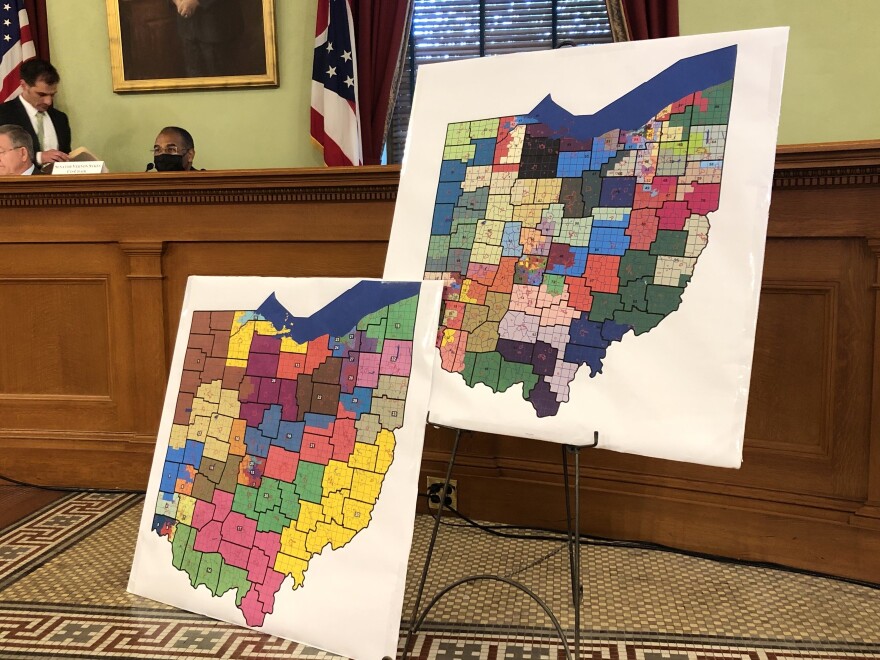As public input meetings continue on the process for drawing new maps for Ohio House and Senate districts, another expert has given a failing grade to one of the maps under consideration by the Ohio Redistricting Commission.
The Princeton Gerrymandering Project gave the map for House districts submitted by Republican Senate President Matt Huffman (R-Lima) an F for partisan fairness and a C for county splits. The Senate map gets a B for partisan fairness, with an A for county splits. Both maps get a C for competitiveness.
The analysis estimates that the maps would allow Republicans to continue to hold a supermajority in the House and a majority in the Senate.
That’s in line with an analysis last week by national experts at Dave’s Redistricting App, but it showed the Senate Republicans’ map would likely end up with the same result in the Ohio Senate as now, 25 Republican districts and 8 Democratic. The 64 of 99 House seats held by Republicans would grow to 67 under Dave’s analysis.
The two Democrats on the seven-member Ohio Redistricting Commission unveiled their revisions to Republican-drawn maps for the House and Senate at the panel’s hearing in suburban Cleveland Monday evening.
But before those maps were introduced, Sen. Vernon Sykes (D-Akron) had proposed maps with 44 Democratic House seats and 14 Democratic Senate seats.
Map drawing consultant Chris Glassburn with Project Govern is working with the Senate Democratic Caucus to update those maps.
“Our amendment today would likely result in 42 Democratic House seats and 13 Democratic Senate seats," Glassburn said.
Glassburn said the amended maps do not split townships and are closer to proportionality.
The commission’s Democrats, Sykes and his daughter, House Minority Leader Emilia Sykes (D-Akron), said they hope the Republican-dominated panel will work with them to enact a bipartisan 10-year plan.
Members of the Ohio Redistricting Commission’s GOP majority praised Glassburn for his work on a revised map aimed at garnering the support of both parties. Secretary of State Frank LaRose called it a “good-faith effort."
Over the course of five hours, Ohioans challenged the commission to make the maps less partisan and more competitive.
Many of those who spoke said they are tired of legislative districts that are so safe for politicians that they don't need to represent the interests of voters. Many of the speakers said they believe young people move out of state because the districts they don't think they can make a difference here in Ohio.
Another Ohio Redistricting Commission hearing will be held Tuesday morning at the Statehouse. The panel plans to adopt the final maps Wednesday, a deadline the panel set after missing the September 1 deadline in the Ohio constitution. That was added as part of the plan to change the map-drawing process in a voter-approved ballot issue in 2015.
Four of the seven members of the commission, including both Democrats, would have to vote to approve the maps for them to be in place for 10 years.
If the Democrats on the commission don't vote for the maps, they would only be good for four years under the new voter-approved process for legislative redistricting. There is also a possibility that failure to produce maps that achieve bipartisanship could result in a lawsuit.
The Associated Press' Julie Carr Smyth contributed to this story.




